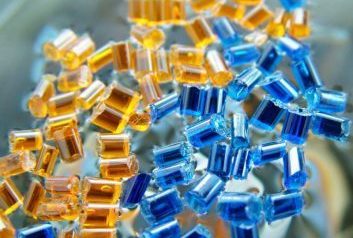The EU Plastics Strategy and the challenge of plastics from electronic waste
On 16 January 2018, the European Commission launched its European Strategy for Plastics in a Circular Economy laying the foundations to a new plastics economy, “where the design and production of plastics and plastic products fully respect reuse, repair and recycling needs and more sustainable materials are developed and promoted”[1].
Plastics from Waste Electrical and Electronic Equipment (WEEE) constitute a particular challenge for recycling due to their complexity and specific technical requirements. At the same time, WEEE is considered to be one of the fastest growing waste streams in the EU, expected to grow to more than 12 million tonnes by 2020[2] at 3–5 % rate per year[3]. On a global level, only 20% of WEEE was recycled through appropriate channels in 2016[4].
PolyCE support of the implementation of the EU plastics Strategy
The Horizon 2020 project PolyCE (2017–2021) will actively contribute to the implementation of the EU Plastics Strategy in the context of high-tech recycled polymers. Covering the full recovery chain from sourcing to recycling processes, remarketing of recycled plastics and reusing them in new electronic products, the project will demonstrate on a large scale how circular business models can look like for complex high-tech plastics from the electronics sector.
We at PolyCE see a large opportunity for European businesses to step forward and to pull the market towards more sustainable practices by leveraging the positive effects of recycling. PolyCE aims to foster circular business models for high-tech plastics through improvement measures covering the entire supply and value chain of high-tech plastics.
In particular, PolyCE intends to demonstrate the feasibility of these circular models for the plastics supply and value chain within the next 3 years. Concrete research outcomes of PolyCE supporting the implementation of the EU Plastics Strategy will include:
· Optimised WEEE clustering for improved collection, sorting, reprocessing and optimised recycling economics, producing high purity PCR plastics streams
· Harmonised technical requirements and systematic quality testing procedures across the entire material value chain
· Uniform grade system for different PCR plastics and classification of the recyclates according to their material properties and final application suitability, which will ultimately strengthen the plastics uptake and the PCR plastics market
· Guidelines for designing new electronic products with PCR plastics
· Guidelines for the selection of most appropriate flame retardants and additives considering a circular model approach. Flame retardants and additives that maintain their properties after several reprocessing and aging cycles and contribute to recover the target performance in PCR plastics.
· New electronic equipment demonstrating the technical and economic feasibility of using PCR plastics, as well as the environmental benefits
· Enhanced market uptake of PCR plastics via the online market place KunststoffWeb
Stay tuned for further updates from PolyCE on our blog, website, and social media channels. Join our expert network to get involved, and subscribe to our newsletter to receive news and updates on the project’s results.
[1] http://ec.europa.eu/environment/circular-economy/pdf/plastics-strategy.pdf
[2] http://ec.europa.eu/environment/waste/weee/index_en.htm
[3]http://www.europarl.europa.eu/RegData/etudes/BRIE/2017/603954/EPRS_BRI(2017)603954_EN.pdf
[4] https://collections.unu.edu/eserv/UNU:6341/Global-E-waste_Monitor_2017__electronic_single_pages_.pdf

